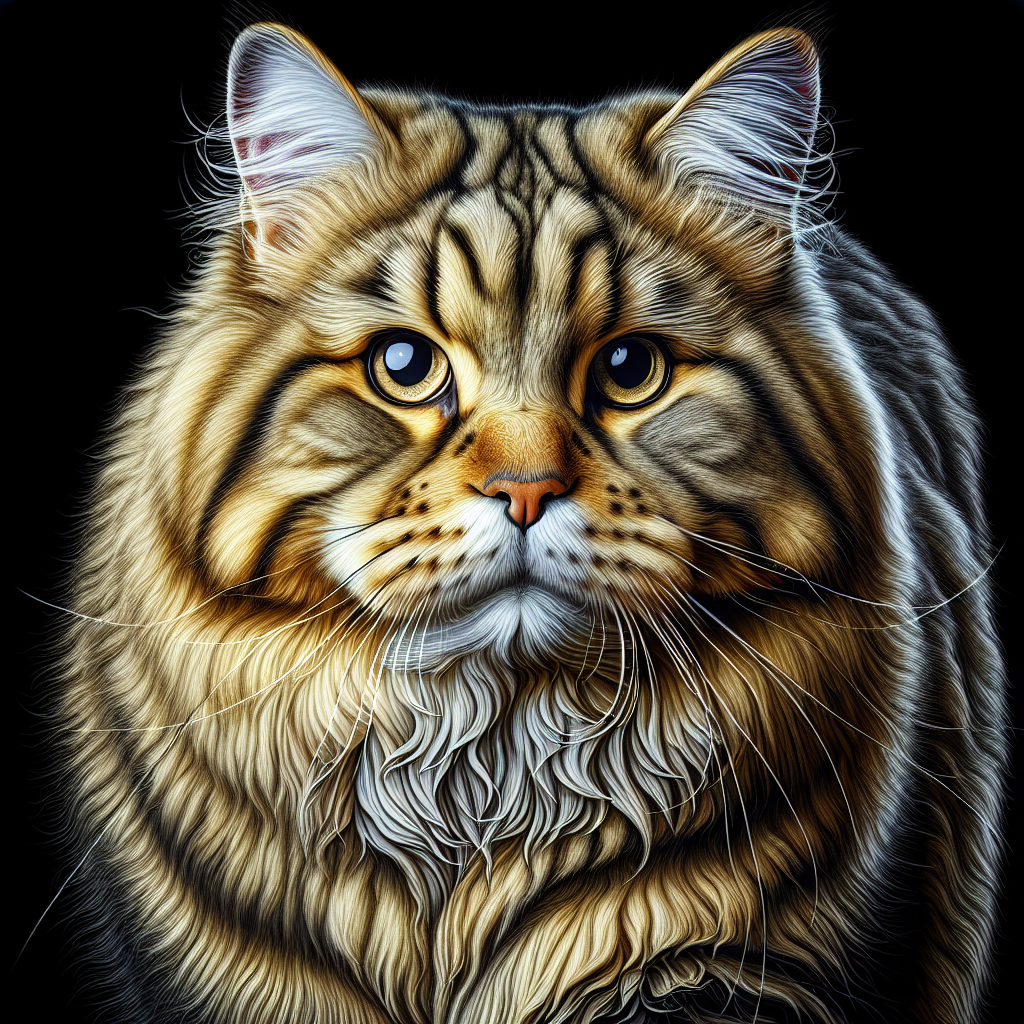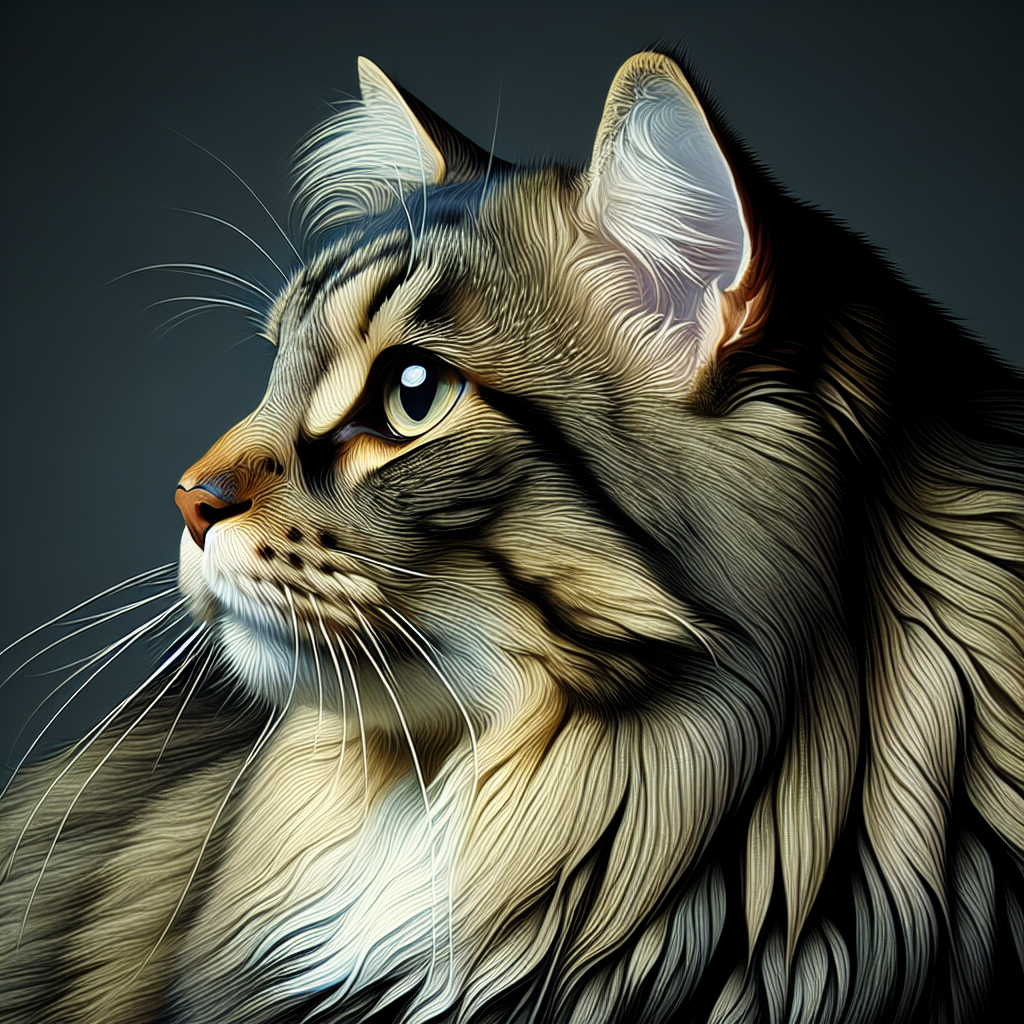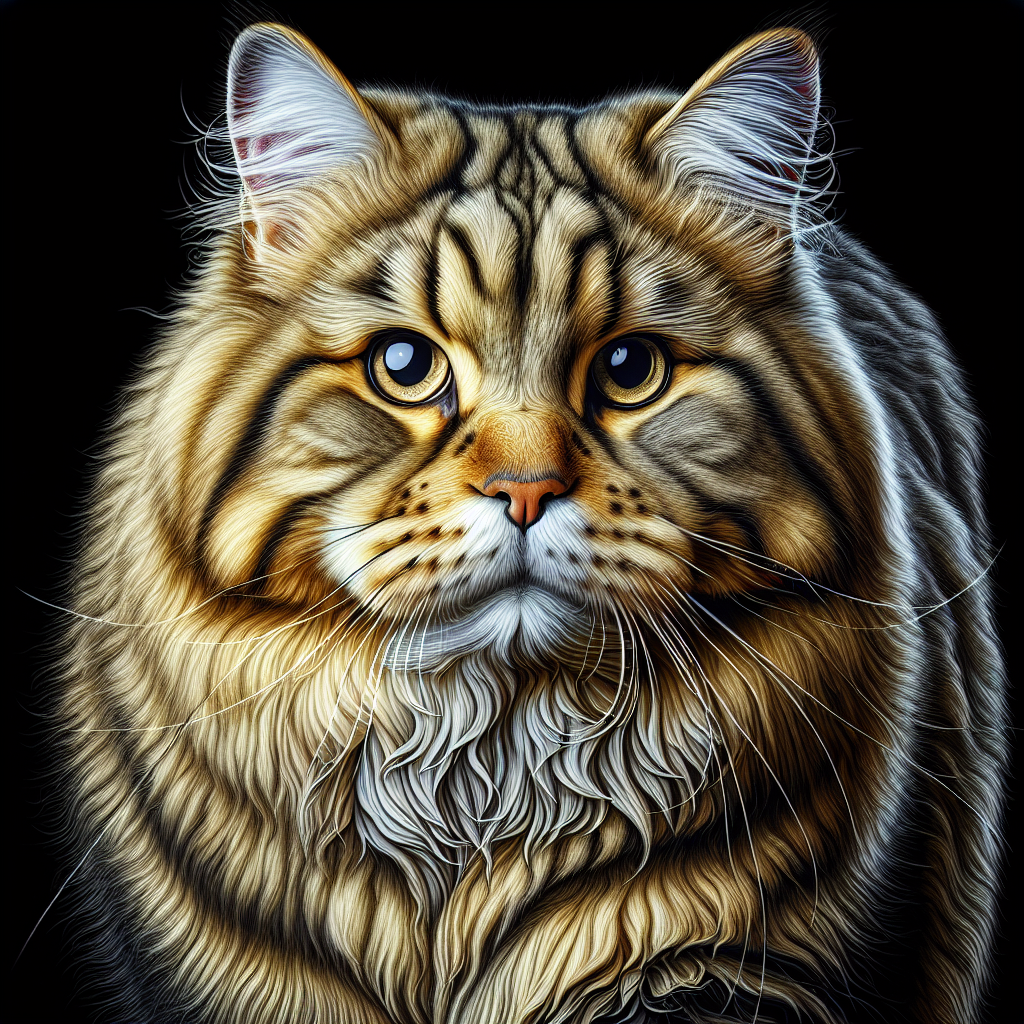Tabby cats are known for their distinctive coat patterns but have you ever wondered just how large these feline friends can grow? From exploring their genetics to considering environmental factors, there are a multitude of factors that can influence a tabby cat’s size. Whether you’re a cat enthusiast or simply curious about these charming creatures, this article will provide you with fascinating insights into the potential size most tabby cats can reach. Get ready to be amazed by the incredible dimensions that these fluffy companions can achieve!
Physical Characteristics of Tabby Cats
Tabby cats are known for their distinct coat pattern, which consists of stripes, spots, or swirls. However, their size and body structure can vary greatly. Let’s explore the size variation, weight range, and body structure of tabby cats.
Size Variation in Tabby Cats
Tabby cats come in all sizes, ranging from small to large. While some tabbies may be petite and delicate, others can be quite hefty and robust. The size of a tabby cat is primarily influenced by genetics, nutrition, and overall health.
Weight Range of Tabby Cats
The weight range of tabby cats can vary significantly. On the smaller side, you may find tabbies weighing around 7 to 10 pounds. These are usually the smaller breeds or individuals with a more petite frame. On the larger side, there are tabbies that can weigh between 15 and 20 pounds or even more. These are often the bigger breeds or cats with a sturdier build.
Body Structure of Tabby Cats
In terms of body structure, tabby cats tend to have a balanced and muscular build. Their bodies are typically well-proportioned, with strong and agile frames. Their legs are sturdy and provide them with excellent mobility and hunting capabilities. The combination of their body structure and coat pattern gives tabby cats an exquisite and captivating appearance.
Factors Affecting the Size of Tabby Cats
The size of tabby cats can be influenced by various factors, including genetics, nutrition, and overall health. Let’s explore how these factors play a role in determining the size of tabby cats.
Genetics
Genetics plays a significant role in determining the size of tabby cats. Certain breeds are naturally larger than others, and breeders often focus on maintaining the characteristics that define the breed. This can result in larger or smaller tabbies within a particular breed. It’s important to note that each tabby cat is an individual, and genetics alone may not be the sole determinant of their size.
Nutrition and Diet
Proper nutrition and a balanced diet are crucial for the healthy growth and development of tabby cats. Feeding your tabby a high-quality cat food that meets their nutritional needs is essential. Providing them with the right balance of proteins, fats, and carbohydrates can contribute to reaching their optimal size. However, it’s important to avoid overfeeding, as obesity can lead to various health issues.
Health and Well-being
A tabby cat’s overall health and well-being can have an impact on their size. Cats that receive regular veterinary care, are free from health issues, and lead an active lifestyle tend to grow and develop to their full potential. Health conditions or underlying factors that hinder their growth and development can affect their size. It’s important to ensure your tabby receives regular check-ups and appropriate care to support their well-being.

Different Tabby Cat Breeds and Their Average Size
Tabby cats come in various breeds, each with its average size range. Let’s explore a few popular tabby cat breeds and their typical size.
Maine Coon
Maine Coon cats are known for their exceptional size. They are one of the largest domestic cat breeds and can weigh anywhere between 15 and 25 pounds. Maine Coons have a sturdy build with a muscular body and are renowned for their friendly and gentle nature.
Siberian
Siberian cats are another breed that tends to be on the larger side. Males can weigh between 15 and 20 pounds, while females usually weigh between 8 and 12 pounds. Despite their size, Siberians are agile and athletic cats with a thick and luxurious coat.
American Shorthair
American Shorthair cats come in various coat patterns, including the tabby pattern. They have a well-balanced and muscular body structure. On average, male American Shorthairs weigh between 11 and 15 pounds, while females weigh between 8 and 12 pounds.
British Shorthair
British Shorthair cats have a round and robust build, which contributes to their larger size. Males can weigh between 12 and 17 pounds, and females typically weigh between 8 and 12 pounds. These affectionate and easy-going cats have a dense and plush coat.
Norwegian Forest Cat
Norwegian Forest Cats are known for their large size and impressive coats. These majestic cats can weigh between 12 and 16 pounds for males, while females generally weigh between 9 and 12 pounds. Their sturdy body structure and thick, water-repellent fur make them well-suited for colder climates.
Comparing Tabby Cats to Other Cat Breeds
While tabby cats come in various sizes, how do they compare to other cat breeds? Let’s take a look at a few popular cat breeds and see how they measure up to tabbies.
Persian Cats
Persian cats are known for their long, flowing coats and adorable round faces. In terms of size, Persians tend to be on the larger side. Males can weigh between 9 and 14 pounds, while females usually weigh between 7 and 11 pounds.
Siamese Cats
Siamese cats have a graceful and slim physique. They are known for their striking blue eyes, pointed coloration, and sleek coat. Siamese cats are generally smaller in size compared to tabbies. Males typically weigh between 8 and 12 pounds, while females weigh between 6 and 8 pounds.
Bengal Cats
Bengal cats are known for their stunning spotted or marbled coats, which resemble those of wild cats. In terms of size, Bengals can vary. On average, males weigh between 10 and 15 pounds, while females weigh between 6 and 12 pounds.
Ragdoll Cats
Ragdoll cats are known for their docile and gentle temperament. They have a semi-long, silky coat that requires regular grooming. In terms of size, Ragdolls tend to be larger cats. Males can weigh between 15 and 20 pounds, while females typically weigh between 10 and 15 pounds.

Role of Gender in Tabby Cat Size
Is there a difference in size between male and female tabby cats? Let’s explore how gender can influence the size of tabbies.
Size Differences Between Male and Female Tabby Cats
Generally, male tabbies tend to be larger than their female counterparts. This is attributed to the fact that male cats have a larger physical build and tend to develop more muscle mass. However, individual variation within each gender is also common, and there can be petite males and larger females.
Effect of Neutering or Spaying on Size
Neutering or spaying, which is the surgical removal of a cat’s reproductive organs, can have an impact on their size. Neutering or spaying cats at an early age can prevent them from reaching their maximum potential size. Hormonal changes after the procedure can lead to a slower growth rate and a smaller overall size. It’s important to consult with your veterinarian to determine the best age and approach for neutering or spaying your tabby cat.
Growth and Development of Tabby Cats
Tabby cats go through various stages of growth and development, just like any other cat. Let’s take a look at the different phases and what to expect.
Kittenhood Growth
During the kittenhood stage, tabby cats experience rapid growth. They are small and fragile when born, but with proper nutrition and care, they quickly start gaining weight and size. A healthy tabby kitten should steadily grow in the first few months of life, reaching their adult size within the first year or two.
Adolescent Growth
As tabby cats transition from kittens to adolescents, they continue to grow, albeit at a slower pace. This stage is characterized by the development of their bone structure and muscle mass. It’s important to provide them with a balanced diet and a suitable environment for physical activity and play to support healthy growth.
Adult Size and Development
By the time tabby cats reach adulthood, their size and body structure are well-established. They have reached their maximum potential size and should maintain their weight within a healthy range. Maintaining their overall health and well-being through proper nutrition, exercise, and regular veterinary care is essential during their adult years.
Importance of Regular Vet Check-ups for Tabby Cats
Regular veterinary check-ups are vital for all cats, including tabbies. Let’s explore why these check-ups are essential for monitoring growth, identifying health concerns, and providing necessary care.
Monitoring Growth and Weight
Regular vet check-ups allow for the monitoring of a tabby cat’s growth and weight. By tracking their progress over time, any abnormal growth patterns or changes in weight can be identified and addressed promptly. This helps ensure that the cat is developing as expected and is not at risk of any health issues related to growth or weight.
Identifying and Addressing Health Concerns
Tabby cats, like any other breed, can be prone to certain health conditions. Regular veterinary check-ups enable early detection and intervention. Issues such as obesity, dental problems, or genetic predispositions can be identified and addressed before they become more severe. Regular check-ups also allow for vaccinations, parasite prevention, and general health maintenance.
Providing Proper Care for Larger Tabby Cats
Larger tabby cats require specific care to maintain their well-being and overall health. Let’s explore a few key aspects of caring for bigger tabby cats.
Feeding a Nutritious Diet
Providing a nutritious diet is crucial for larger tabby cats. They may require a slightly different balance of nutrients to support their growth and maintain a healthy weight. Consult with your veterinarian to determine the appropriate portion sizes and dietary requirements for your specific tabby cat.
Engaging in Regular Exercise
Larger tabby cats, just like any other cat, need regular exercise to stay active and maintain a healthy weight. Engage your tabby cat in interactive play sessions or provide toys that encourage physical activity. Regular exercise not only helps them burn off excess energy but also keeps their muscles toned and joints mobile.
Creating a Suitable Environment
Creating a suitable environment for larger tabby cats includes providing ample space and appropriate cat furniture. Larger cats require more space to move around comfortably. Ensure they have access to scratching posts, elevated platforms, and cozy resting areas that can support their weight and provide them with a sense of security.
Understanding Average Size versus Exceptional Size
While most tabbies fall within the average size range, there can be some exceptional cases of extremely large tabby cats. Let’s explore what can contribute to these exceptional sizes and the considerations associated with them.
Unusual Cases of Extremely Large Tabby Cats
In rare instances, tabby cats can exhibit exceptional size, surpassing the typical weight range for their breed. These cats can be considerably larger than average and often garner attention due to their impressive size. Factors such as genetics, individual variation, and other environmental factors can contribute to these exceptional sizes.
Considering Genetic Anomalies
Some exceptionally large tabby cats may have genetic anomalies that result in their exceptional size. These anomalies can influence their growth and body structure, leading to larger-than-average cats. While these cats may attract attention and fascination, it’s important to remember that their extraordinary size may come with potential health implications.
Health Implications of Extra Large Size
Extra large size in tabby cats can potentially pose health risks. Conditions such as joint problems, heart issues, and obesity-related complications may be more prevalent in larger cats. Regular vet check-ups, appropriate nutrition, and appropriate exercise should be prioritized to mitigate any health risks associated with the exceptional size of tabby cats.
Conclusion
Tabby cats come in various sizes, with weight ranges and body structures that can differ significantly. Genetics, nutrition, and overall health play key roles in determining a tabby cat’s size. Various tabby cat breeds also exhibit different average sizes. Taking into consideration the role of gender, growth, and development in tabby cats, as well as the importance of regular veterinary check-ups and proper care for larger tabbies, will contribute to their overall well-being. Understanding the difference between average size and exceptional size and recognizing any health implications associated with extraordinary sizes is crucial for responsible tabby cat ownership.

